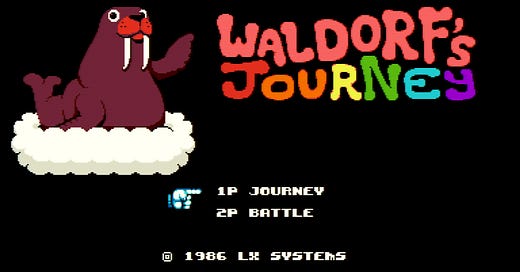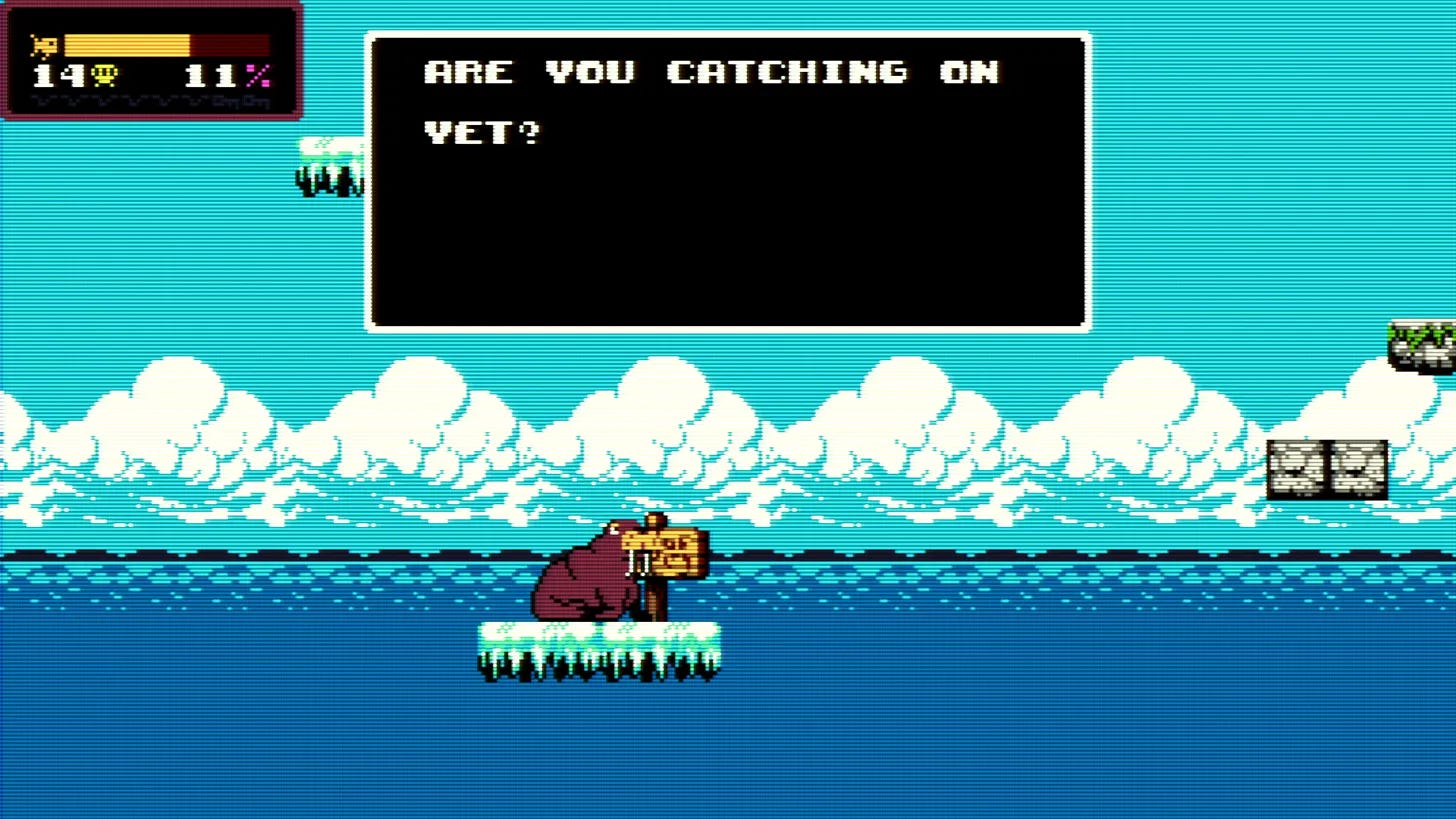One of the most instructive aspects of my journey with UFO 50 is that it’s forcing me to contend with the inherent bias of my established tastes, in some places disarming them, in others validating why they exist in the first place.
I’m not traditionally a fan of weighty momentum in platformers, even something as humble and well tuned as the original Mario Bros is a gaming experience I struggle with. It’s a weird clash of reaction times and forward planning, the rhythms of which sometimes are just ever so slightly out of step with what my brain can cope with. It's the same reason I struggled with Dark Souls while adoring Bloodborne.
My reasoning, however, is much more shallow than I would normally be willing to admit. Why I like the platforming prowess of a game like, for example, Fez, or the slightly more relevant Downwell, has nothing to do with what that precision is trying to tell me about these games. Rather cynically, it just feels good to play, whereas games where I have to consider weight and momentum, traditionally don’t (to me, at least).
Purpose is the key to all of this, however, and it's only recently that I’ve started to register why.
Enter Waldorf’s Journey, a game that on paper contains a lot of things that piss me off. Weird, slippery aerial movement, imprecise controls. A lot of shit off screen that can really mess up your progress or even end your run that you can’t see until it’s largely too late. More maddening than anything else, I had a couple of absolutely stellar runs that I biffed right at the finish line, genuinely a couple of pixels away from the exit. It’s an infuriating experience.
But I love it. I love it because it has purpose.
Eagle eyed viewers might recall, as part of my Backlog Diaries series, my words on the game INK, where I talked about how I struggled with how slippery its controls were. What I didn’t really factor into that admittedly quite bare bones analysis, is the fact that the imprecision I felt during play didn’t really observe anything fundamental about the game’s core idea. It was just how it handled.
Here in the dreamscape of our wiley walrus, that imprecision *is* the game; an experience that is informed by the challenge of grappling with these weird controls and punitive fail states; without which this would probably be about five minutes long and, honestly, kind of boring.
Falling at the intersection of Ninpeck and Velgress, with a touch of Golfaria in the mix for good measure, Waldorf’s Journey is a game that I really gelled with. A quintessential ‘one more go’ type experience that is bolstered by a lot of really brilliant little features.
First of all there are a few hail marys put in place:
Puffins that act as lifeguards, merchants offering a range of single use items to aid in your platforming, weathervanes that can change the direction of the wind or stop it alltogether should it prove to be too much of a nuisance.
Each of these things a boon, but often only in very specific circumstances and within the context of a brilliantly implemented risk-reward balance, where sometimes the safe thing to do is to let these opportunities pass by.
Secondly, while movement and momentum in the game are a mixed bag for me, what I really appreciated was the intentionality behind which aspects were solid or fluid. Moving through the air is a haphazard affair, even with the little flap of your flippers allowing you some degree of control, but when it comes to landing on platforms, you stop on a dime.
It’s almost like the opposite of coyote time in that regard, a pixel perfect piece of precision arriving at just the right time. A flash of adrenaline to keep you engaged in the spectacle of this challenge.
Finally, the most crucial part of why I got on so well with this game compared even to the similar Ninpeck, is two things it does to encourage repeat play.
First of all, it charts your progress as a percentage, which updates with each platform you land on, and is shown throughout. This is a fascinating psychological trick that encourages the player to keep going. If you can get to 30% then you can get to 50% (the garden gift criteria). If you can get to 50% then 75% isn’t far off, and then the exit surely isn’t so much of a stretch after that?
Coupled with this, there is a surprisingly interesting story being told throughout your experience. As you navigate this treacherous dreamscape you come across signposts, a spectral advisor trying to communicate a great threat on the horizon. It’s a novelty, for sure, a retro take on the dreaded audio log, but it was one thing that I started actively seeking out whenever I found my repeated failings too much to bear.
It is a little frustrating at times. The fact that you can’t see where you’re going, although intentional and mitigated by use of the cheap and cheerful Beach Ball, has dicked me over a lot.
This experience of being within a ball hair of completing the game only to fall at the last hurdle on multiple occasions did sap my enthusiasm somewhat. But, crucially, it didn’t stop me from trying again. And again. And again. Eventually, with much persistance, I reached the exit. And now I want to go back and see if I can hit the cherry criteria too.
That’s the Spelunky magic, baby!
It’s a real planetary alignment of a game, this. If this is what dreams are made of, then hey, I don’t want to wake up.







